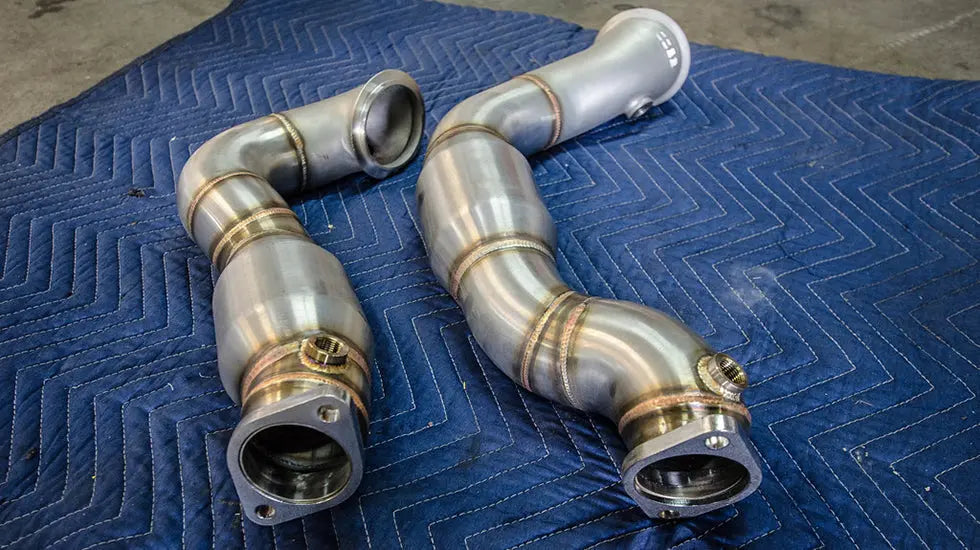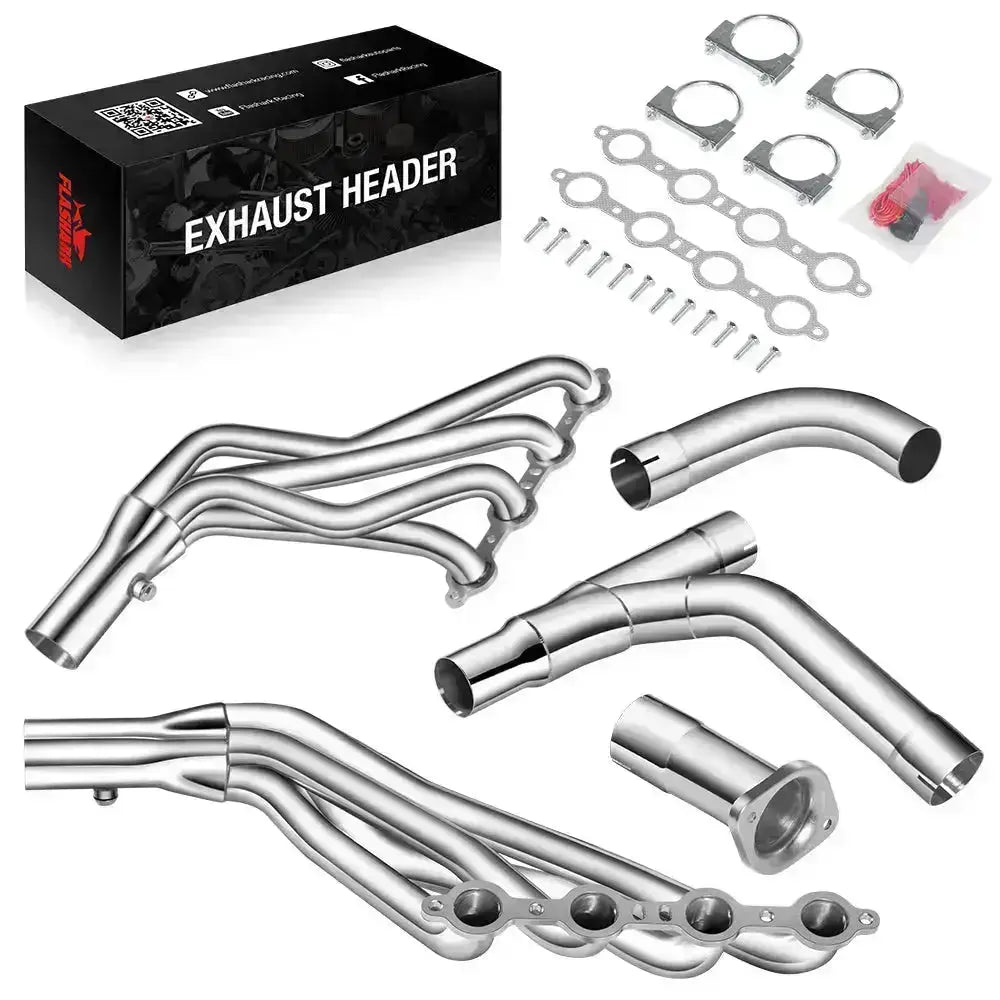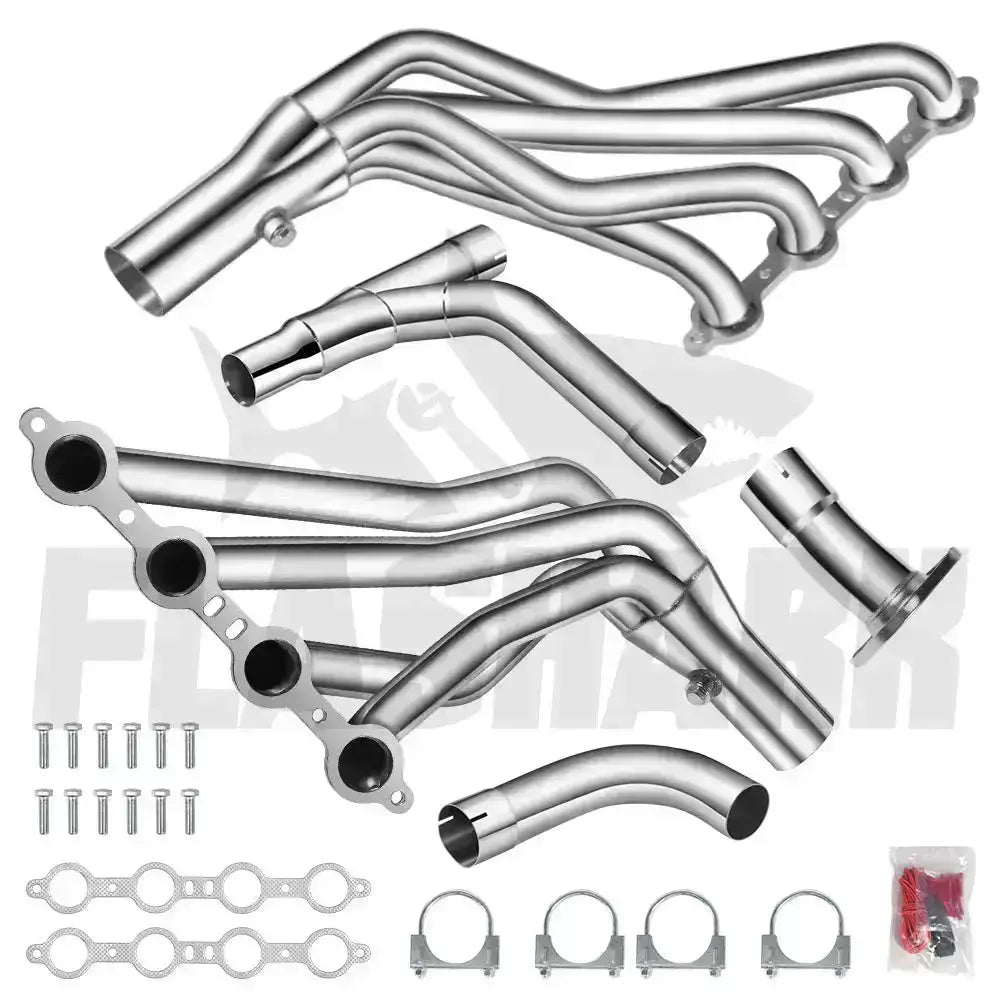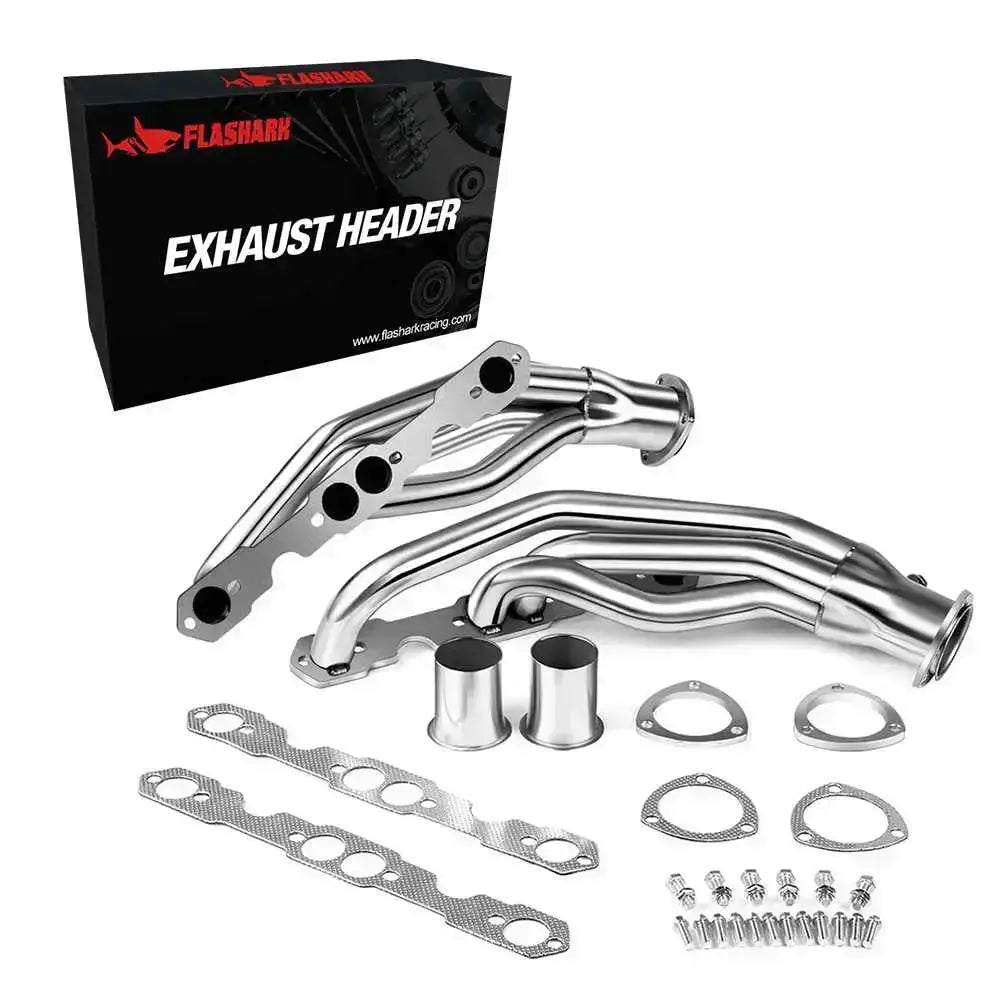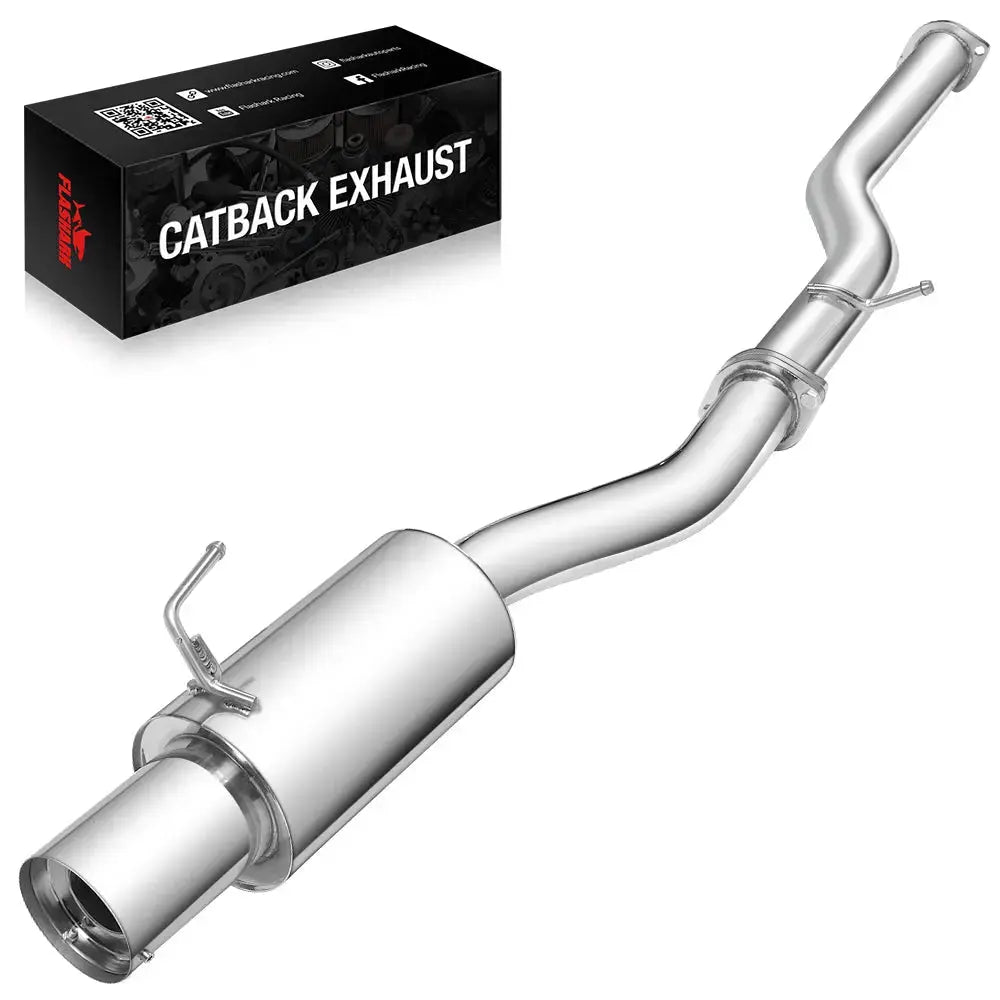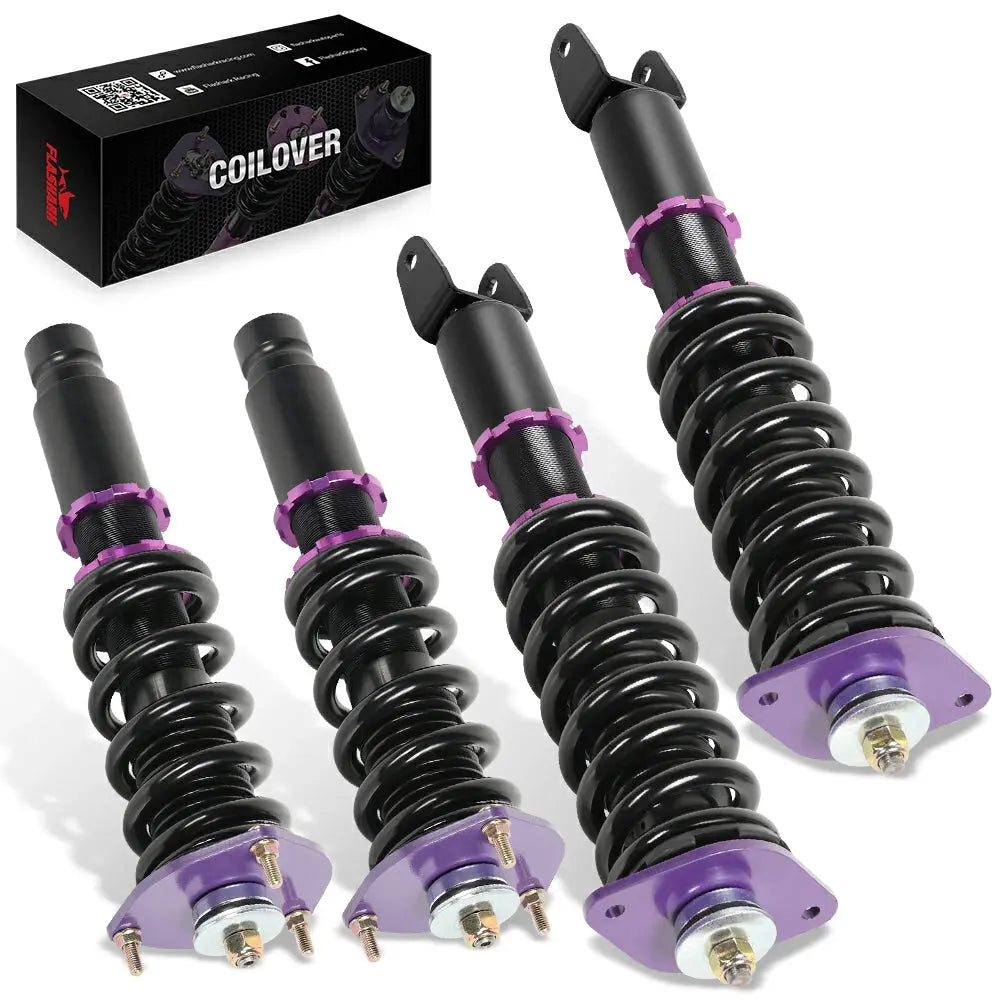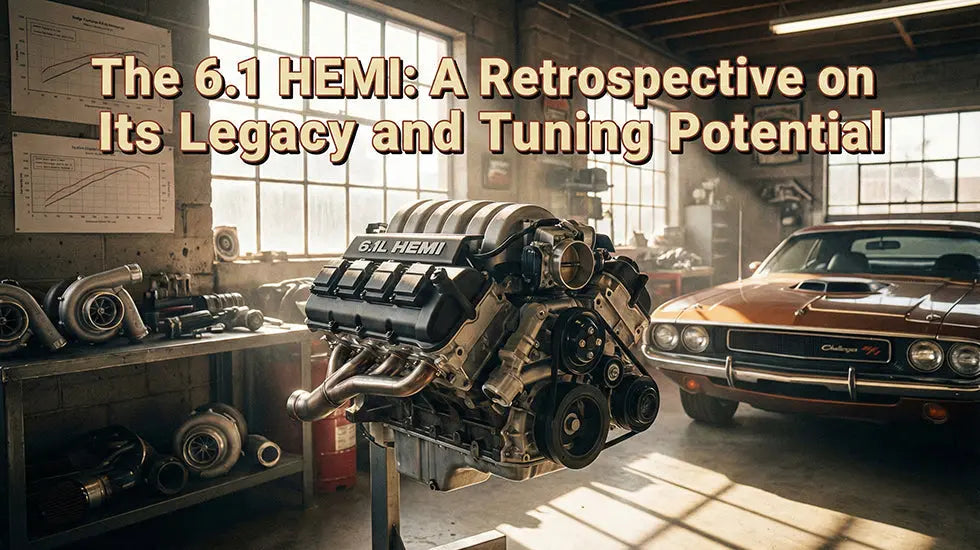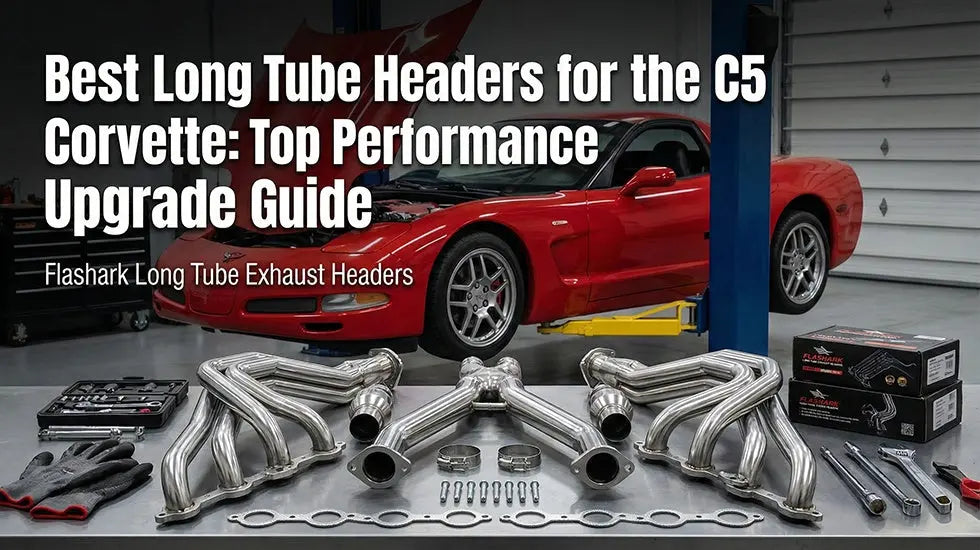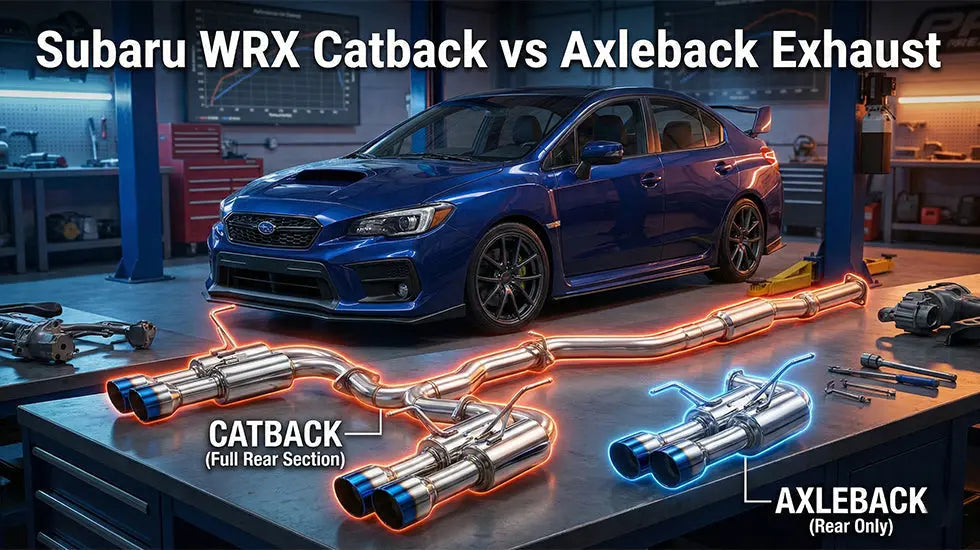El mundo del rendimiento automotriz es vasto, y una modificación clave a la que recurren los entusiastas es el tubo de escape con catalizador de alto flujo. Este componente desempeña un papel crucial en la mejora del rendimiento del motor, especialmente en vehículos turboalimentados. En este artículo, profundizaremos en qué son los tubos de escape con catalizador de alto flujo, sus beneficios, consideraciones de instalación y mucho más. Al finalizar, comprenderá a fondo esta parte esencial de su sistema de escape.
¿Qué es un bajante catalítico de alto caudal?
Un tubo descendente con catalizador de alto flujo es un componente de escape especializado que ayuda a mejorar el flujo de gases del motor, específicamente a través del sistema de turbocompresor. El tubo descendente es un elemento clave del sistema de escape, ya que conecta el turbo con el resto del sistema. Lo que diferencia a la versión de "alto flujo" es el uso de un convertidor catalítico menos restrictivo, que aumenta el flujo de escape manteniendo cierto nivel de control de emisiones.
A diferencia de los tubos de escape tradicionales, que pueden incluir convertidores catalíticos restrictivos, un tubo de escape con catalizador de alto flujo utiliza un diseño más abierto para permitir que los gases de escape fluyan con mayor libertad. Esto no solo mejora la eficiencia del turbocompresor, sino que también optimiza el rendimiento del motor al reducir la contrapresión.
La función principal del convertidor catalítico en el tubo de escape es reducir las emisiones nocivas. Si bien las versiones de alto caudal utilizan un diseño menos restrictivo, cumplen con la normativa de emisiones, lo que las convierte en una opción más adecuada para circular en carretera que un tubo de escape sin catalizador.
Beneficios de instalar un bajante con catenaria de alto caudal
Al considerar un bajante con catalizador de alto flujo para su vehículo, es fundamental comprender las ventajas de rendimiento que ofrece. Estas son algunas de las más significativas:
Mejoras en el rendimiento y aumento de potencia
Una de las razones más convincentes para instalar un tubo de escape con catalizador de alto flujo es el aumento del rendimiento del motor. Un tubo de escape menos restrictivo permite que los gases de escape salgan más rápido, reduciendo el retardo del turbo y mejorando la respuesta del acelerador. Esto puede resultar en un aumento notable de la potencia, especialmente a altas RPM.
Además, el menor tiempo de giro del turbo proporciona una experiencia de conducción más ágil, especialmente en vehículos turboalimentados, donde cada fracción de segundo cuenta. En promedio, un tubo descendente con catalizador de alto flujo puede generar entre 10 y 30 caballos de fuerza, según la marca y el modelo del vehículo.
Respuesta y eficiencia del turbo
Los tubos descendentes con catalizador de alto flujo también mejoran significativamente la respuesta del turbo. Al reducir la contrapresión, el turbo puede acelerar su aceleración, entregando más potencia a bajas RPM. Esta mejora es especialmente beneficiosa para maximizar la eficiencia del motor turboalimentado, reduciendo el tiempo que tarda el turbo en alcanzar los niveles máximos de sobrealimentación.
Además, al aumentar el flujo de aire a través del sistema, el diseño de alto flujo puede ayudar a mejorar la eficiencia general del motor, lo que a menudo conduce a un mejor ahorro de combustible a largo plazo, dependiendo de las condiciones de conducción y el ajuste.
Control de ruido y características del sonido
A diferencia de un tubo de escape sin catalizador, un tubo de escape con catalizador de alto flujo conserva cierto nivel de insonorización gracias al convertidor catalítico. Esto significa que el coche seguirá produciendo un sonido de escape más fuerte y agresivo en comparación con el sistema de serie, pero no tan extremo como el de un sistema sin catalizador. Para quienes buscan un aumento de rendimiento sin sacrificar demasiado el sonido, el tubo de escape con catalizador de alto flujo es la opción ideal.
¿Cómo se compara un bajante con catalizador de alto caudal con un bajante sin catalizador?
Tanto los bajantes de alto caudal con catalizador como los bajantes sin catalizador son modificaciones populares, pero satisfacen diferentes necesidades y prioridades. Comparemos ambos en términos de rendimiento, ruido y requisitos legales.
Comparación de rendimiento
En términos de rendimiento, tanto los tubos de escape con catalizador de alto flujo como los sin catalizador ofrecen mejoras sustanciales al mejorar el flujo de escape. Sin embargo, los tubos sin catalizador tienden a ofrecer una potencia ligeramente superior debido a la ausencia de convertidor catalítico, lo que genera menos restricciones. Dicho esto, la diferencia de rendimiento no siempre es enorme, y muchos conductores encontrarán que un tubo de escape con catalizador de alto flujo ofrece un buen equilibrio entre rendimiento y control de emisiones.
Emisiones y consideraciones legales
Desde un punto de vista legal, los bajantes con catalizador de alto flujo suelen ser la mejor opción para quienes necesitan garantizar que su vehículo cumpla con las normativas de emisiones. Un bajante sin catalizador, si bien ofrece un flujo de escape óptimo, generalmente no supera las pruebas de emisiones en zonas con normativas estrictas, como California.
Por otro lado, los bajantes catalíticos de alto flujo incorporan un convertidor catalítico que reduce las emisiones nocivas y mejora el flujo de escape. Por ello, suelen ser legales en más lugares, lo que los convierte en una opción más segura para conductores habituales y quienes viven en zonas con pruebas de emisiones.
Instalación de un bajante catalítico de alto caudal: lo que necesita saber
A la hora de instalar un bajante catalítico de alto caudal, hay varios factores importantes a considerar. Si bien es posible realizar la instalación uno mismo, es fundamental comprender el proceso y las herramientas necesarias.
Desafíos comunes de instalación
Uno de los desafíos de instalación más comunes al actualizar a un tubo de escape con catalizador de alto flujo es asegurar un ajuste correcto. Dependiendo del modelo de su vehículo, el nuevo tubo de escape podría no ser compatible con el sistema de escape original, por lo que podría necesitar adaptadores o modificaciones adicionales. En algunos casos, retirar el tubo de escape original puede ser difícil, especialmente si presenta óxido o corrosión.
Ajuste y pruebas posteriores a la instalación
Tras instalar el tubo de escape con catalizador de alto flujo, es importante ajustar la ECU de su vehículo para optimizar su rendimiento. Muchos vehículos requieren una reprogramación de la ECU para compensar el aumento del flujo de aire y evitar problemas con la relación aire-combustible. Ajustar el rendimiento garantiza un funcionamiento eficiente del motor y maximiza los beneficios del nuevo tubo de escape.
También es importante probar el sistema después de la instalación. Debe supervisar los niveles de sobrealimentación de su vehículo y el rendimiento general del motor para asegurarse de que todo funcione correctamente.
Consideraciones legales: ¿Son legales en la calle los bajantes de alto caudal con catenaria?
La legalidad de un bajante de alto caudal con catalizador depende en gran medida del lugar donde viva y de las leyes de emisiones de su zona. Por ejemplo, en estados como California, donde las normas de emisiones son especialmente estrictas, un bajante de alto caudal con catalizador puede pasar las pruebas de emisiones, siempre que cumpla con ciertas normas.
Regulaciones en diferentes estados de EE. UU.
En EE. UU., las leyes sobre emisiones varían considerablemente según el estado. Si bien muchos estados permiten bajantes con catalizador de alto caudal, otros, como California, tienen regulaciones más estrictas. Es importante investigar las leyes locales antes de realizar cualquier modificación en el sistema de escape para evitar multas o no poder pasar una inspección estatal.
Estándares globales de emisiones
A nivel mundial, los países tienen diferentes estándares de emisiones de escape. Los países de la Unión Europea, por ejemplo, tienen estrictas regulaciones de emisiones que los vehículos deben cumplir. Un tubo de escape con catalizador de alto flujo puede ayudar a cumplir con estas regulaciones, a la vez que ofrece mejoras en el rendimiento. Sin embargo, siempre consulte los estándares específicos de su país antes de realizar cualquier modificación posventa.
Bajante con catalizador de alto caudal vs. sistema de escape completo
La elección entre un tubo de escape con catalizador de alto flujo y un sistema de escape completo depende de sus objetivos y del nivel de rendimiento que desee lograr.
Un sistema de escape completo suele ofrecer mejoras de rendimiento más significativas, ya que implica la actualización de todos sus componentes, desde el tubo de escape hasta las puntas. Sin embargo, esta actualización es más costosa y requiere una instalación más compleja. Por otro lado, un tubo de escape con catalizador de alto flujo es una solución más rentable para quienes buscan mejorar el rendimiento del turbo sin reemplazar todo el sistema de escape.
Conclusión: ¿Es un bajante con catalizador de alto caudal adecuado para usted?
En conclusión, un tubo descendente con catalizador de alto flujo puede ofrecer mejoras significativas en el rendimiento, especialmente en vehículos turboalimentados. Ya sea que busque una mejor respuesta del acelerador, mayor potencia o menor retardo del turbo, esta modificación puede mejorar su experiencia de conducción.
Si vive en una zona con leyes de emisiones estrictas, un bajante con catalizador de alto flujo es una excelente opción, ya que ofrece ventajas de rendimiento sin sacrificar la legalidad. Es una excelente opción para los entusiastas de los coches que desean llevar su vehículo al límite sin sacrificar demasiado el control de emisiones ni el sonido.

